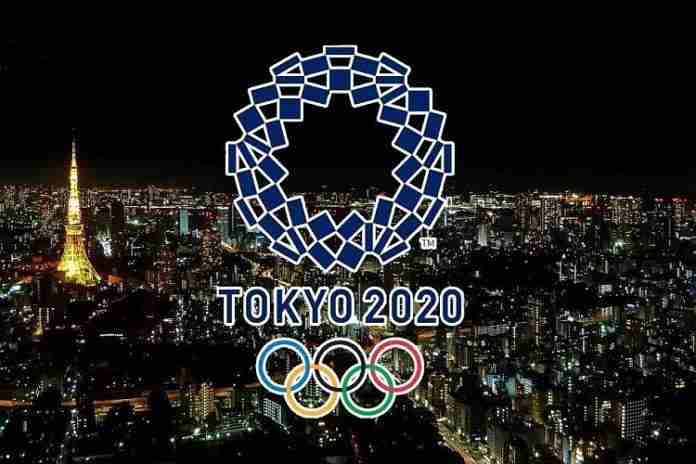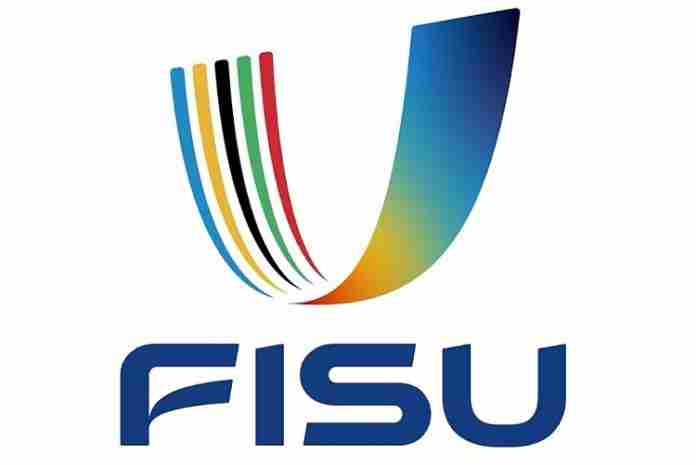(★ Friends: You did it! Thank you! Happy to report a total of 51 donations over the past few weeks that has covered our half-yearly server and support bills. Wow! The next bill is coming, so if you would like to help, please donate here. Thank you to all of our readers; your interest and support is the reason this site goes on. ★)
First came the thunder, followed a day later by the lightning. The question is whether anyone got hurt, or will be.
On Monday, the U.S. Olympic & Paralympic Committee released its largest-ever package of organizational and financial reports, which chief executive Sarah Hirshland said showed “2019 was a year of remarkable progress in which we listened to our community, changed our culture and implemented a strategic plan that will allow us to better support, serve and partner with all the stakeholders.”
This is quite true and the level of detail was impressive, but Hirshland skipped mentioning one of the main targets of the package, the U.S. Congress.
On Tuesday, the U.S. Senate passed – without any dissenting votes – S. 2330, the “Empowering Olympic, Paralympic, and Amateur Athlete Act” introduced in 2019 by Sen. Jerry Moran (R-Kansas) and Richard Blumenthal (D-Connecticut). The product of a series of Senate sub-committee hearings, the bill as drafted requires a lengthy series of oversight measures by the USOPC over itself and the U.S. National Governing Bodies, more enforcement against athlete abuse, more funding for the U.S. Center for SafeSport, more athlete representation and a possible “legislative mechanisms by which Congress can dissolve the Board of the U.S. Olympic Committee and decertify NGBs.”
But in fact a lot of the requests made in the bill and during the four hearings held to produce it have already been integrated into the USOPC programming. The organization’s “Impact Report” – formerly the “Annual Report” – showcased these items strongly and emphasized their “co-creation” by all of the stakeholders:
The report noted four “strategic priorities”:
(1) “[C]reating a better experience for our athletes;”
(2) “[I]mproving the effectiveness of all the organizations that serve our athletes;”
(3) “[E]stablishing an athletes-first culture;” and
(4) “[P]reparing for the awesome, transformational opportunity represented by hosting the Olympic and Paralympic Games in LA in 2028.”
“Approximately 82% of the USOPC’s budget has a direct impact on its mission of supporting athletes via a variety of programs for both athletes and their National Governing Bodies. In addition to (1) performance grants and rewards, additional support is provided in the form of (2) training facilities, (3) sports medicine and science, (4) coaching education, (5) health insurance, (6) promotional opportunities, (7) education and career services, (8) outfitting and travel, and (9) athlete safety, well-being and (10) anti-doping programming.” (Numbering added.)
This is a direct response to the many complaints that the USOPC spends only a tiny percentage of its funding on athletes. In fact, an extraordinary effort was made to identify athlete-support funding, not only at the USOPC level, but in 61 first-time “Sport Benefit” reports, which detail both the direct-grant and support-service finding by the USOPC to the U.S. National Governing Bodies for Olympic and Paralympic sports.
The breakdown of USOPC spending was specifically noted as
“Eighty-three percent of our quad resources go toward programs and activities that directly support Team USA athletes—while 10% is invested in generating revenue through fundraising and commercial activities and another 7% on general administration.”
(Yes, readers, there’s a 1% discrepancy there, but let’s get on with the main themes.)
The report noted that for 2019, “$83 million was distributed directly to athletes, National Governing Bodies and High Performance Management Organizations. Funds given to NGBs and HPMOs were utilized for elite athlete programming, such as training camps, coaching and travel to international competition” and
“The USOPC increased its Athlete Performance Pool to 1,484 athletes, expanding the number of athletes qualified for monthly monetary stipends to supplement the training and competition resources provided. Additional support is offered via Operation Gold—which totaled $3.4 million in payments to 595 athletes for their top finishes in each sport’s most competitive senior international competition of 2019—and Elite Athlete Health Insurance benefits, which amounted to $7.3 million in support to 1,326 athletes.”
At the USOPC training centers in Colorado Springs and Lake Placid, some 16,429 athletes in 1,072 programs were supported during 2019.
● Support for athlete inquiries, legal matter and safety
One of the items specifically requested in the Senate hearings was a USOPC-funded program of athlete assistance in legal, protest and safety areas. This has been met with an expansion of what used to be called the Athlete Ombudsman. In 2019:
“The [Office of the Athlete Ombuds] responded to approximately 1,200 requests for assistance, with the most prominent areas of inquiry being team selection, anti-doping and athlete safety issues. The office has continued to improve its visibility, resulting in an increase of access to dispute resolution opportunities prior to formal proceedings and a reduction of the accumulation of costs and fees for athletes. The office also distributed more than $65,000 in legal aid to athletes and improved the quality of its services with an updated website, usathlete.org …”
With regard for the U.S. Center for SafeSport, for which the Moran-Blumenthal bill requires a flat annual contribution of $20 million in perpetuity, the USOPC noted that its support for that organization was $4.5 million in 2018, rising to $7.5 million in 2019 and a promised $11.5 million in 2020. As to its performance – it is completely separate from the USOPC – the report stated:
“In 2019, the Center received 2,770 reports, opened 1,151 cases based on exclusive jurisdiction (sexual misconduct), asserted discretionary jurisdiction over 144 allegations of emotional or physical misconduct” (the latter must be turned over to the National Governing Bodies for follow-up).
The centralized SafeSport database of disciplinary actions had 1,218 individuals listed at the end of 2019, of which 235 had been added by the U.S. Center for SafeSport itself.
The USOPC’s education and career programs provided tuition grants of $530,067 to 173 athletes (52 competing Olympians, 72 hopefuls, 49 retired athletes); about 400 athletes received $2.4 million in educational support from donors and USOPC partner DeVry University, and 83 athletes gained job placements through USOPC partners ACE and Adecco Group.
This is a lot of what varying witnesses were looking for in the Congressional testimony. In addition, the USOPC has implemented – and is continuing to increase – scrutiny over the National Governing Bodies with recent by-law and operating rule changes. The program of NGB audits is continuing and the report stressed that 20 audits were completed in 2019 (17 National governing bodies and three Paralympic governing bodies).
It’s worth noting that the USOPC report wasn’t shy and noted the Moran-Blumenthal bill directly:
“This is an important bill aimed at increasing the voice of athletes and strengthening the USOPC’s oversight of the Olympic and Paralympic community in the U.S. While the legislation had yet to officially pass at the close of 2019, we continue to broadly support the bill, which is consistent with many of the reforms our organization had already implemented or began to shape in 2019.”
Now passed by the Senate, a companion bill in the U.S. House was announced, co-sponsored by Susan Brooks (R-Indiana), John Curtis (R-Utah), Diana DeGette (D-Colorado) and Ted Lieu (D-California).
There are significant problems with the bill from the International Olympic Committee’s standpoint, notably the ability of the Congress to – by resolution – dissolve the USOPC Board or dismiss a National Governing Body, but this may yet be worked out in the House version.
But make no mistake, the USOPC has seen the dangers and has done much of what has been requested of it in terms of organizational and structural reform. Whether this satisfies its critics – and/or the Congress – is another matter.
The actual financial report was not that dramatic. As is usual in a non-Olympic year, the USOPC posted a loss in operations; in 2019, this was $38.80 million in revenue of $205.16 million and expenses of $243.95 million. However, thanks to strong investment performance in 2019, the combined assets of the USOPC, U.S. Olympic Endowment and the USOPC Foundation rose to $605.73 million at the end of 2019.
One very positive sign for the future was the increase in public fundraising by the Foundation, which attracted 49,722 contributors, who gave a combined $40.60 million, a new high; the number of individual donors rose by almost 20% from 2018.
The USOPC’s financial strength will help it through the coronavirus pandemic, but if the 2020 Olympic Games in Tokyo and/or the 2022 Winter Games in Beijing are canceled, the organization could be in trouble, not to mention the already-precarious situation of the National Governing Bodies. A note on the post-2019 issues revealed a possibly important contract issue between the IOC and U.S. broadcaster NBC:
“A Right of Abatement clause was also triggered [by the postponement], whereby after completion of the Games in 2021, NBC and the IOC shall negotiate in good faith an equitable reduction in the applicable Broadcast Rights payments. In addition, the USOPC is negotiating with multiple current sponsors, [U.S. Olympic and Paralympic Properties] and various vendors in Tokyo to accommodate the postponement, and further assessment of near- or long-term impact is ongoing.”
What will actually happen is unknown, by the IOC, by NBC, by the USOPC, its sponsors and the Congress. But this 2019 report shows that the USOPC was listening during the Congressional hearings and has been making progress. But that may still not be enough to avoid being struck by lightning … multiple times.
Rich Perelman
Editor
You can receive our exclusive TSX Report by e-mail by clicking here. You can also refer a friend by clicking here.

























